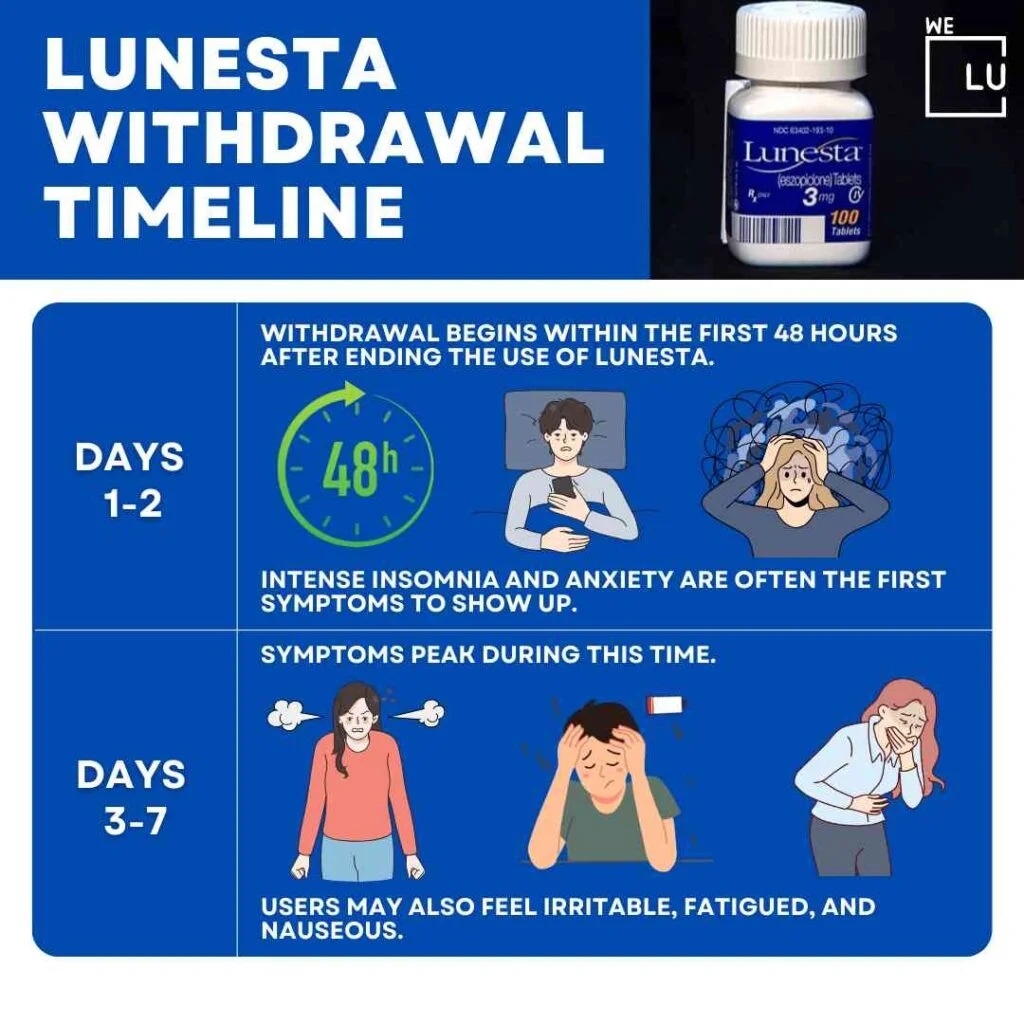Introduction
Lunesta 3mg (Eszopiclone) is a widely prescribed medication for insomnia, helping individuals achieve restful sleep. While effective, it also carries a risk of addiction and dependence, particularly when used for extended periods or beyond prescribed doses. This guide will explore Lunesta 3mg addiction, its symptoms, withdrawal effects, and treatment options, ensuring you have all the necessary information to navigate its safe use.
Understanding Lunesta 3mg
Lunesta is a non-benzodiazepine sedative-hypnotic, working by affecting neurotransmitters in the brain to induce sleep. It is commonly prescribed in doses of 1mg, 2mg, and 3mg, with Lunesta 3mg being the strongest and most likely to lead to dependency if misused. While lower doses like Lunesta 2mg are often sufficient for some patients, others may develop tolerance and escalate their dosage, increasing addiction risks.
Is Lunesta 3mg Addictive?
Lunesta is classified as a Schedule IV controlled substance, indicating a potential for abuse and dependence. Prolonged use or misuse can result in physical and psychological dependence, making it difficult for users to stop without experiencing withdrawal symptoms.
Risk Factors for Lunesta Addiction
Several factors contribute to the risk of Lunesta addiction, including:
- Long-Term Use: Using Lunesta for more than a few weeks increases dependency risks.
- Higher Doses: Taking more than the prescribed 3mg dose can lead to tolerance and addiction.
- Recreational Use: Some users abuse Lunesta for its euphoric effects, heightening addiction potential.
- Underlying Mental Health Issues: Anxiety and depression can make individuals more prone to substance abuse.
- Mixing with Other Substances: Combining Lunesta with alcohol or other sedatives increases the risk of addiction and severe health complications.
Signs and Symptoms of Lunesta Addiction
Recognizing Lunesta addiction early can prevent severe consequences. Common symptoms include:
Physical Symptoms
- Drowsiness and excessive sedation during the day
- Slurred speech and poor coordination
- Headaches and dizziness
- Memory problems and confusion
- Gastrointestinal issues (nausea, vomiting)
Psychological Symptoms
- Increased cravings for Lunesta
- Irritability and mood swings
- Anxiety and depression
- Hallucinations or unusual dreams
Behavioral Symptoms
- Doctor shopping for extra prescriptions
- Lying about usage or taking higher doses than prescribed
- Withdrawal from social activities
- Engaging in risky behaviors due to impaired judgment
Understanding Lunesta Withdrawal
Stopping Lunesta suddenly can lead to withdrawal symptoms, making it essential to taper off under medical supervision.
Common Lunesta Withdrawal Symptoms
- Insomnia rebound: Difficulty sleeping after stopping the medication
- Anxiety and restlessness: Feeling nervous or on edge
- Mood disturbances: Depression and irritability
- Physical discomfort: Sweating, nausea, and muscle pain
- Hallucinations: In severe cases, individuals may experience visual or auditory hallucinations
Timeline of Lunesta Withdrawal
Withdrawal symptoms typically follow this timeline:
- First 24-48 Hours: Insomnia, anxiety, and irritability begin
- Day 3-7: Peak withdrawal symptoms, including nausea, headaches, and tremors
- Week 2-3: Symptoms gradually subside, but psychological cravings may persist
- Month 1+: Some individuals experience lingering anxiety and sleep disturbances
Lunesta Addiction Treatment Options
Overcoming Lunesta addiction requires a structured treatment plan, often involving medical supervision and psychological support.
Detoxification Process
A medically supervised detox is the safest way to stop using Lunesta, allowing healthcare providers to manage withdrawal symptoms and prevent complications.
Behavioral Therapy and Counseling
- Cognitive Behavioral Therapy (CBT): Helps change negative thought patterns related to drug use
- Support Groups: Groups like Narcotics Anonymous (NA) provide community support
- Individual Counseling: Helps address underlying emotional triggers for addiction
Medication-Assisted Treatment
In some cases, doctors may prescribe alternative medications to ease withdrawal symptoms and support recovery.
How to Prevent Lunesta Addiction
- Follow Prescription Guidelines: Never take more than the prescribed dose
- Limit Duration of Use: Avoid long-term use beyond a few weeks
- Monitor for Dependence Signs: If you notice increased cravings, consult your doctor
- Seek Alternative Sleep Aids: Behavioral therapies and natural remedies can help manage insomnia without medication
Conclusion
Lunesta 3mg can be an effective short-term treatment for insomnia, but it carries a risk of addiction and withdrawal if misused. Understanding the dangers and seeking timely treatment can help individuals overcome dependence and regain control of their lives. If you or a loved one is struggling with Lunesta addiction, professional help is available to support recovery and ensure a healthier future.


